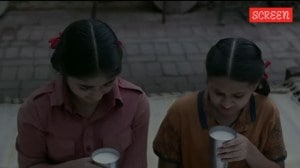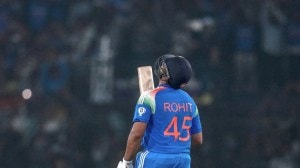The holy trail
Colaba's churches are quite remarkable. Whether it is the Roman Catholic splendour of the Holy Name Cathedral built in 1902, or the Gothic ...

Colaba’s churches are quite remarkable. Whether it is the Roman Catholic splendour of the Holy Name Cathedral built in 1902, or the Gothic elegance of the Afghan Church, erected half a century before that for Protestant worshippers; the fact remains that pockets of piety continue to flourish in this city.
"Built in the memory of the officers whose names are written above, and of the non-commissioned officers, private soldiers, too many to be so recorded, who fell, mindful of their duty, by sickness or by the sword, in the campaign of Sind and Afghanistan, AD 1838-1843," says the inscription running around the marbled walls of the chancel of the Afghan Church an imposing presence in Navy Nagar.
One of the city’s finest examples of Gothic architecture a style remarkable for its soaring volumes, elegantly lean silhouettes, and its shunning of excess ornamentation the Afghan Church is unrivalled in its sheer size. Each piece within the church is dedicated to a soldier of the Afghan campaign be it the assemblage of memorial plaques or the luminous stained glass panels decorating the bays and the clerestory; the china mosaic panels behind the altar or the gleaming brass worked into its flooring.
Behind each name, carved in stone or brass, is a tale of martyrdom, in places like Kandahar and Maiwand. Some like Henry Francis Brooke, died trying to save a friend. Others, like Major P Louis Napoleon Cavagnari ended their life in the besieged Kabul Residency.
Compared to the cobwebbed grandeur of the Afghan Church, its contemporary in the neighbourhood, the Bowen Memorial Methodist church, is quite modest. The church’s spire is lost in the cacophony of neighbouring structures, the calligraphed entrance plaque just another in a line of shopfronts.Built in honour of the missionary George Bowen in 1887, it is one of the first three Methodist churches built in Mumbai. It is also the only one that hasn’t moved from its prime position on the Gateway road.
Its architectural style was a compromise effected for economy. Though the congregation would have preferred an "ecclesiastical structure, the expenses were so heavy there was no alternative…" So, Mumbai’s tropical climate dictated the ornate timber balconies and tiled roofs, the function necessitated the tall Gothic spire surmounted by a cross. It makes the building look like a colonial bungalow that would rather be a church.The interiors of the church are simple, solemn and clean. By letting out half of its premises to other users, it has solved the economic crises which plagued it in the past. Even today, the Port Trust owns the site, but gone are the difficult days of 1913 when it was hard to scrape together the annual ground rent of Rs 800.
Of the same faith, but a slightly younger vintage, is the Wesley Church opposite Electric House. The Wesley Church incorporates more elaborate decorative details. A symmetrically-ordered, three-arched entrance porch opens into the spartan high-vaulted interior. Stained glass windows over the entrance, with sections of mangled lead and missing panes, let in the light. But the piece de resistance is the gigantic pipe organ next to the altar.It looks like a 19th century rocket launcher, what with its tall gleaming metal pipes and control panels. Foot pedals and two keyboards enhance the effect. Believed to be the oldest surviving instrument of its kind in the city, the plaque on its gleaming body credits the craftsmanship to Peter Conacher & Co of Huddersfield.



- 01
- 02
- 03
- 04
- 05




























